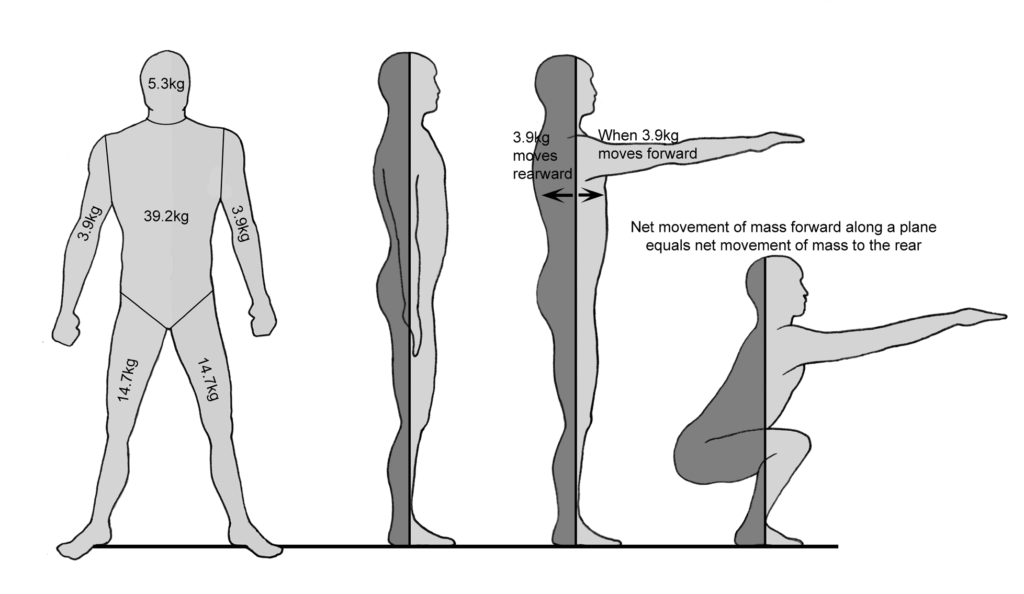CARDINAL PLANES
As discussed on 190105, infinite planes pass through the body and divide it into sections. “Cardinal planes” are those that divide the body in halves. The cardinal sagittal plane divides the body into right and left halves. The cardinal transverse plane divides the body into upper and lower halves. The cardinal frontal plane divides the body into front and back halves.
The point at which all three cardinal planes—or their axes—intersect defines the point around which body mass is equally distributed. This point is called the center of mass.
MASS DISPLACEMENT AND BALANCE
Every segment of the body has a mass. For example, an individual weighing 81.7 kg (180 lb.) will have a head that weighs about 5.3 kg (11.7 lb.). When we move a body segment in a direction—moving an arm forward, for instance—the weight of that segment moves away from its equilibrium state (or the state of standing at rest).

Figure 2: The body maintains equilibrium in simple and complex movements by balancing the movement of mass.
When the arm segment’s 3.9 kg (8.6 lb.) move forward, an equivalent mass must move rearward to maintain balance. In general, the body is programmed to do this unconsciously. In a complex, multi-segment movement such as the air squat, more segments move and the magnitude of weight displacements is larger, but the principle is the same: Forward and backward displacements of body-segment weights must be equivalent to maintain balance.
Comments on Planes of the Body
The more complex and dynamic a movement, the harder it is to balance. Especially with added load!
Isometrics can really help learn the right position at each phase of movement.
I wish I could find my balance when doing pistols as easily as I do when performing air squats.
Completely different exercise and stress. Start with supporting yourself and build from there
You can start with a partial range of motion pistol to a box. Slowly bring it down.
Also if you understand the article you can easily also help yourself by holding a weight in front of you. It will keep you balance in the Frontal plane. Slowly reduce the weight as you get use to it.

Planes of Motion: Body
4